Templo Bongjeongsa (봉정사) [Patrimonio de la Humanidad de la Unesco]
0m 3007 2023-05-23
Bongjeongsa-gil 222, Seohu-myeon, Andong-si, Gyeongsangbuk-do.
Edificado en el 12º año del reinado de Munmu de Silla, es una de las construcciones de madera más antigua del país. La zona en donde se encuentra ubicada el templo posee un ambiente natural puro, es decir, la condición ideal para proteger la salud. Además, a diferencia de otros templos que se van remodelando y adaptan un estilo más contemporáneo, el templo Bongjeongsa sigue conservando la tradición budista de la antigüedad en lo alto de la montaña. Este templo fue fundado por el monje Neungin en el año 672, durante el reino de Silla.
Jukheon Traditional House[Korea Quality] / 죽헌고택 [한국관광 품질인증]
971.4507481282711m 513 2020-12-10
24, Taejangjukheon-gil, Seohu-myeon, Andong-si, Gyeongsangbuk-do
+82-10-5217-2174
Located near Bongjeongsa Temple in Andong, Gyeongbuk, the Historic House of Jukheon (Gyeongsangbuk-do Folk Cultural Heritage No. 146) was built in 1886 by renowned independence fighter Kim Ga-jin (1846-1922) and sold to Yi Hyeon-chan (courtesy name: Jukheon) in 1890. The house is now used as the shrine (Jaesa) of his family. It would be a great cultural experience for anybody to welcome the rising sun at a historic building such as this.
Meeting the sunrise from this historical heritage is sure to be the highlight of one’s trip. The house follows the square layout characteristic to the late Joseon period houses. The house itself is surrounded by old pine trees that add to the charm of the house.
Jukheon Traditional House has four Korean traditional rooms, namely the 2-person Jukheon Gallery, Study, Elisabeth Room and the 4-person Jukheon Dongnong Room. The house demonstrates the traditional beauty of Korean houses like the wooden platform hall built upon the stone foundations, screens, and roofs with exposed beam. The screens open to the view of the stone fence and the mountains far away. Elizabeth Room was constructed to commemorate the visit of Her Majesty Queen Elizabeth II of United Kingdom to UNESCO World Heritage site Bongjeongsa Temple in 1999. ‘Queen Elizabeth Road’ stretches from the Jukheon Traditional House to the Bongjeongsa Temple, allowing the guests to trace Her Majesty’s visit with their own steps. A mill with a thatched roof, located to the side of the complex, allows the guests to experience the traditional stepping mill. The pillar of the mill building is adorned with flags from all over the world, testifying to the many international visitors who have stayed at the house. Guests can also enjoy a free breakfast of toast, coffee, and other simple fare on the open hall of the building.
Byeolcheongung (별천궁)
1.6 Km 51 2021-03-30
141, Bongjeongsa-gil, Andong-si, Gyeongsangbuk-do
+82-54-857-4168
It is a restaurant with a hanok interior. This restaurant's signature menu is set menu with grilled salted mackerel. This Korean dishes restaurant is located in Andong-si, Gyeongsangbuk-do.
An dong gotak Esanru [Korea Quality] / 안동고택 이상루 [한국관광 품질인증]
2.9 Km 14593 2020-09-10
3193-6, Pungsantaesa-ro Seohu-myeon, Andong-si, Gyeongsangbuk-do
+82-54-843-3328 / +82-10-3522-1542
'Andong City in Gyeongsangbuk-do Province is a town of culture and folk traditions where one can trace the long history of eminent families. It is also a symbol of time-honored tradition to the extent that the name Andong reminds people of traditional Korean hanok houses. Isangru, an ancient hanok house with a history of 2,590 years, located in the foothills of Mt. Cheondeungsan, served as a venue for the memorial rite for Kim Seon-pyeong, the progenitor of the Andong Kim clan and a meritorious government official during the reign of King Taejo of the Goryeo Dynasty. Isangru, meaning ‘a tall majestic building built on frosty ground’, is a two-story wooden building with a tiled roof characterized by elegant curves that form a half-hipped shape when viewed from the side. The house consists of two accommodations, Taejangtaesa and Isangru, arranged in a ‘ㅁ’ shape. The large door located in the middle of the ground floor offers an open view of the beautiful natural environment including a pine grove, a pond, and wild flowers. Built in 1750, this hanok house shows its age in its wooden pillars, stone walls, and interiors decorated with wooden engraving on the handrail. Guests can stay in a room heated with wood in winter, or in a tent for a different experience in summer. The house has been well maintained with various repair works, and underwent extensive renovations, including the wallpaper and floors, in 2013. Although it is close to a road, the house is surrounded by old trees, creating the impression that it is situated in the middle of a dense forest. A path runs between ancient pine trees on the road leading to the house. There is a pond with water lilies and white lotus flowers in front of the house, while various species of wild flowers including big blue lily turf, plantain lily, montane aster, and asters come into full bloom around the house in their respective seasons. Fully maintained by the Andong Kim clan, Isangru is a large structure that can accommodate many people and is used to hold clan assemblies. This tall building is also used as a venue for concerts, seminars and traditional hands-on experience programs for students, including tea ceremony, masked dance, natural dyeing, hanji (Korean paper) crafts, and filial duty education programs. The house also offers guests a traditional nobleman’s dining table including various wild vegetable dishes for breakfast. Isangru is popular among Korean and foreign guests who want to experience traditional Korean culture or enjoy a relaxing stay with their parents amid beautiful nature. In addition, it is located between Hahoe Folk Village and Dosanseowon Confucian Academy in Andong, and offers easy access to other nearby tourist attractions including Bongjeongsa Temple, which is the oldest wooden building in Korea and is just three minutes’ drive away, and the two-hour-long Dulegil Trail.
Hakgasan Chamma Sikdang(학가산참마식당)
4.1 Km 98 2021-04-09
677, Bukpyeong-ro, Andong-si, Gyeongsangbuk-do
+82-54-868-7456
It is a good house with delicious dishes including fresh yams, where side dishes are cooked every morning. This Korean dishes restaurant is located in Andong-si, Gyeongsangbuk-do. The most famous menu is bulgogi.
Hakbongjongtaek [Korea Quality] / 학봉종택 [한국관광 품질인증]
5.2 Km 5944 2023-04-13
2830-6, Pungsantaesa-ro Seohu-myeon, Andong-si, Gyeongsangbuk-do
+82-54-852-2087, +82-10-6811-1106
'Hakbong Head House is the head house of the Uiseong Kim clan and was originally built near Sogyeseodang Village School by Kim Gwang-chan, an 8th-generation descendant of Hakbong Kim Seong-il, in 1762. In 1964, the house was moved to its current location.
The main building (bonchae) was extended from a ‘ㅁ’-shaped structure to a ‘巳’–shape structure. The anchae (women’s quarters) consists of a daecheong (main floored room) measuring 2-kan (a unit of measurement referring to the distance between two columns) on the right, an anbang measuring 2-kan on the left, and kitchen at the end. The upper part of the low-ceilinged kitchen has a gobang (storeroom) in which household goods used to be stored. The daecheong is large compared to the overall size of the house because head houses usually held many ancestral rites.
The Hakbong Head House has an impressive modern garden that was created during construction work carried out when the house was relocated after the Japanese colonial era. The well-maintained garden with its fantastically-shaped trees and rocks also serves as a venue for musical concerts on a regular basis. Guests will surely be fascinated to find out about the history of the people who once inhabited this house and dedicated themselves to the country in times of trouble.
Ongcheon 21segi Jjinppang (옹천21세기찐빵)
6.0 Km 50 2021-03-24
959-7, Gyeongbuk-daero, Andong-si, Gyeongsangbuk-do
+82-54-859-7058
This is a place where you can enjoy unique steamed bread at an affordable price. This restaurant's signature menu is steamed bun with red bean filling. This Korean dishes restaurant is located in Andong-si, Gyeongsangbuk-do.
Bosque Recreativo del Monte Hakgasan (학가산자연휴양림)
6.4 Km 43333 2020-10-27
Hyuyangnim-gil 210, Bomun-myeon, Yecheon-gun, Gyeongsangbuk-do
El monte Hakgasan (882 m de altura) en Yecheon, provincia de Gyeongsangbuk-do, está localizado en una remota e intacta región que ha mantenido su belleza natural. Sin embargo, este bosque recreativo es fácilmente accesible tras un relajante paseo por la ribera del río.
Las cabañas de madera que se encuentran en el bosque completan el entorno natural. La refrescante esencia de la madera de los cipreses, junto con las cabañas, hacen que los visitantes se sientan rejuvenecidos. Además, los cálidos rayos del sol entran por las ventanas, dando a las cabañas un hogareño aspecto.
Por encima del bosque se encuentra el hermoso sendero con el que se puede llegar al pico de la montaña en unas 2 horas. Hay también otras instalaciones, como zonas para hogueras, un escenario al aire libre para actuaciones, un parque infantil, un gimnasio, un parque acuático y salas de lectura.
Buda de Pie Tallado en la Roca de Icheon-dong en Andong (안동 이천동 마애여래입상)
6.8 Km 2229 2021-05-04
Icheon-dong, Andong-si, Gyeongsangbuk-do.
Es una estatua de Buda esculpida en piedra, en cuyo lugar se ubicaba antigüamente el templo Yeonmisa. Sin embargo, en la actualidad, en sus cercanías se ha construido la ermita Jebiwon, por lo que en ocasiones se le llama "Estatua budista de Jebiwon". Es una maravillosa obra de escultura, trabajada en una enorme roca que apunta hacia el oeste, lo más peculiar de esta pieza es que por encima del cuerpo se ha colocado la cabeza del Buda, que supuestamente fue trabajada por separado. Aunque la parte posterior de la cabeza presenta pequeñas deformaciones por daños, en general, se encuentra bien conservada. Esta técnica de esculpir primero el cuerpo y luego trabajar la cabeza y colocarla por encima fue un mecanismo que estuvo de moda durante la era de Goryeo, y debido a los formatos y detalles de la pieza, se supone que es una obra perteneciente al siglo XI.
Yedam (예닮)
7.0 Km 70 2021-03-30
78-28, Gwiyeori-gil, Andong-si, Gyeongsangbuk-do
+82-54-842-3131
A restaurant frequently introduced in Korean gourmet programs. The best menu at this restaurant is set menu with grilled salted mackerel. This Korean dishes restaurant is located in Andong-si, Gyeongsangbuk-do.
![Templo Bongjeongsa (봉정사) [Patrimonio de la Humanidad de la Unesco]](http://tong.visitkorea.or.kr/cms/resource/16/2654216_image2_1.jpg)
![Jukheon Traditional House[Korea Quality] / 죽헌고택 [한국관광 품질인증]](http://tong.visitkorea.or.kr/cms/resource/78/2636178_image2_1.jpeg)
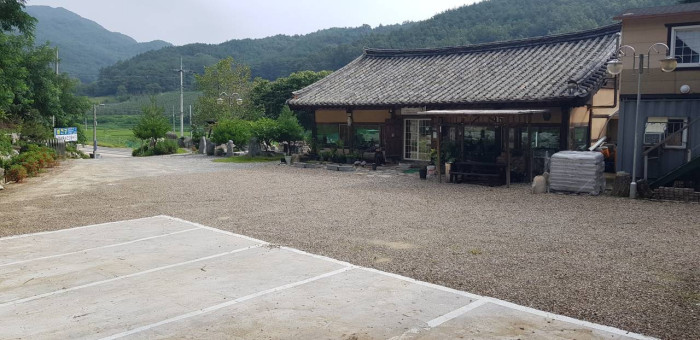
![An dong gotak Esanru [Korea Quality] / 안동고택 이상루 [한국관광 품질인증]](http://tong.visitkorea.or.kr/cms/resource/65/2579465_image2_1.jpg)
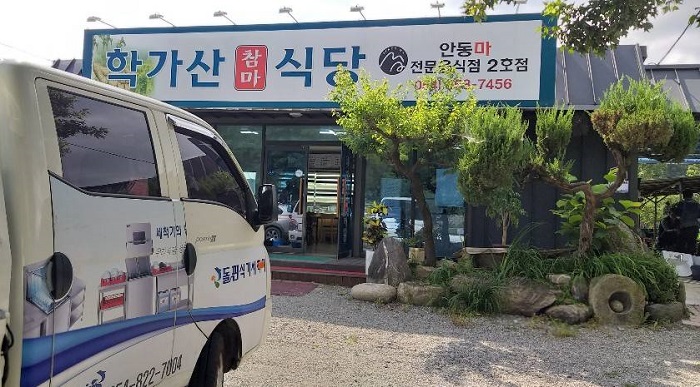
![Hakbongjongtaek [Korea Quality] / 학봉종택 [한국관광 품질인증]](http://tong.visitkorea.or.kr/cms/resource/87/2579587_image2_1.jpg)
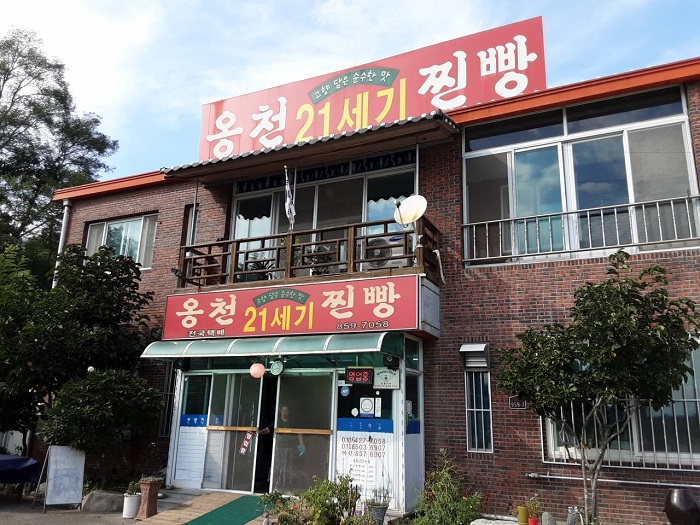

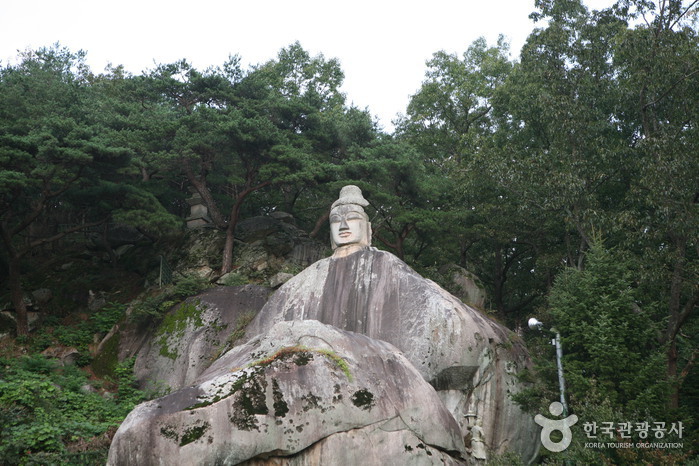
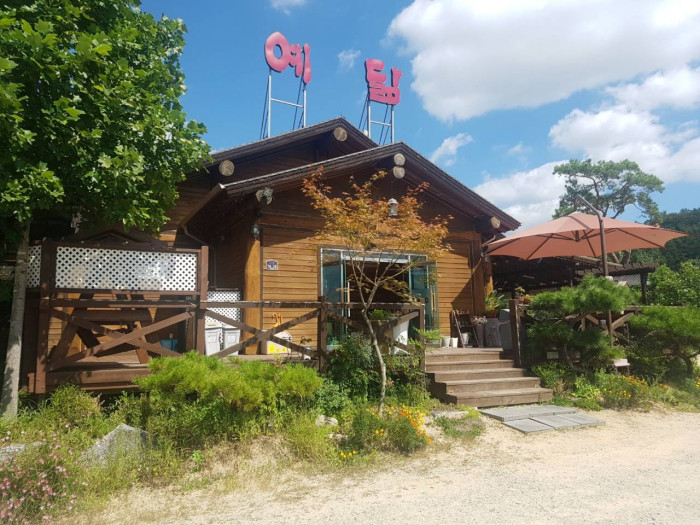
 Español
Español
 한국어
한국어 English
English 日本語
日本語 中文(简体)
中文(简体) Deutsch
Deutsch Français
Français Русский
Русский